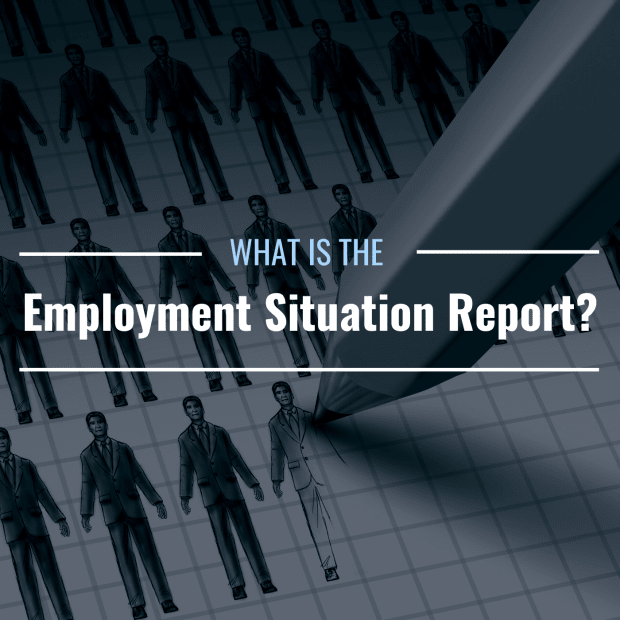
wildpixel from Getty Images; Canva
What Is the Employment Situation Report?
Every month, the U.S. Bureau of Labor Statistics releases its Employment Situation Report, also known as the Jobs Report. It contains information about how much employment and wages have grown or contracted in the United States since the previous month. This data sheds light on employment trends, which are invaluable to economists, analysts, and investors.
The Employment Situation Report is made up of two separate reports: The Current Employment Statistics Survey, which tracks data from approximately 697,000 work sites, and a Household Survey, which is conducted by the U.S. Census and includes approximately 60,000 households. This survey provides the key information behind the country’s unemployment rate.
Dozens of demographics are measured in these reports, and so analysts usually turn to the Summary report to encapsulate the top-line data that they need.
When Is the Employment Situation Report Released? What Time?
The Employment Situation Report is released on the first Friday of every month at 8:30 a.m. EST.
What Does the Employment Situation Report Measure?
In a nutshell, the Jobs Report estimates how many people are working, how much they are getting paid, how many hours they are working, and how many people are out of work. Let’s take a closer look at each factor:
- Nonfarm Payrolls: This is a measure of the number of paid full- and part-time workers in every sector except farm workers, due to the seasonal nature of their work, and those who classify themselves as self-employed since they are not responsible for withholding payroll taxes.
- Unemployment Rate: In order to calculate the unemployment rate, the BLS takes the number of unemployed people as a percentage of the labor force, which is the sum of employed and unemployed people. A person defined as unemployed had to be available for work in the week referenced as well as made an attempt to find work in the previous four weeks.
- Average Hourly Earnings: Average hourly earnings, an important indicator of labor cost inflation, are calculated by taking the total worker payroll per industry and dividing it by the sum of worker hours plus one-half of overtime hours.
- Average Weekly Hours: These are the average hours per worker for which pay was received. This is different than scheduled hours and includes factors like absenteeism, part-time work, and labor stoppages. It is calculated by dividing the total weekly hours by the employees paid for those hours.
Why Is the Employment Situation Report Important?
Everyone keeps an eye out for the monthly Jobs Report. It’s considered the single best measure of health in the U.S. economy, and it generally sets the tone for the other economic indicators that are released throughout the month. The Federal Reserve uses data from the Employment Situation Report to determine whether it should raise, lower, or maintain interest rates in order to keep the economy sound.
In addition, two key pieces of this report, the unemployment rate and average hourly earnings, appear in many inflation models.
Other data from this report is used to help predict a host of other economic indicators:
- Average hourly earnings are used to help predict both personal income and the wages and salaries component of the Employment Cost Index.
- The index of aggregate manufacturing hours is used to help predict industrial production.
- The change in construction jobs is used to help predict both housing starts and construction spending.
How Does the Employment Situation Report Affect the Stock Market?
Simply put, the Jobs Report can move the markets. High unemployment affects all aspects of the economy, causing workers to lose wages, consumer spending to shrink, and production output to decline.
A low unemployment rate, on the other hand, signifies that the economy is growing, which could positively affect GDP numbers, new-home sales, consumer spending, and a host of other factors. In this type of environment, stock prices tend to rise and corporate earnings often grow. Typically, interest rates remain low or unchanged when employment is strong, thus causing bond prices to fall.







